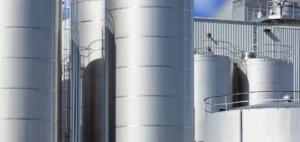More than 500 accredited participants at COP30 in Belém were associated with companies or institutions involved in promoting carbon capture and storage (CCS) technologies, according to an analysis by the Center for International Environmental Law (CIEL). This presence exceeds the figures recorded at the previous two conferences in Dubai and Baku, with 475 and 480 individuals respectively.
Profiles tied to heavy industry and technology
The count was based on the official list of approximately 42,000 participants published by the United Nations. CIEL identified 531 individuals representing entities actively engaged in developing or promoting carbon capture technologies, including industrial associations, technology groups, or companies applying these processes within their production chains.
These technologies are designed to intercept carbon dioxide emissions directly from industrial chimneys or the ambient air, before injecting them into geological formations for permanent storage. While presented as a solution for decarbonising sectors difficult to electrify, these techniques are also criticised for their real-world effectiveness at scale.
Alignment with oil and gas interests
Among the cited entities are the Taiwan Carbon Capture Storage and Utilization Association, the Australian Global CCS Institute, and multinational companies such as Amazon, Ørsted, and Saint-Gobain, all involved in projects incorporating these technologies. CIEL reports that 80% of those identified in this list of CCS promoters also appear in a separate list of 1,602 fossil fuel industry lobbyists identified by other organisations the previous week.
The analysis also highlights the presence of representatives from national oil companies such as PetroChina and Petrobras, as well as the US-based Occidental Petroleum (Oxy), recognised as a pioneer in using CO2 capture to enhance oil recovery from mature fields.
Influence embedded in official delegations
According to CIEL, around 40 of these representatives are integrated within official country delegations, including Brazil, Russia, Japan, and several Gulf monarchies. Their participation raises questions about the increasing influence of these groups in international negotiations. Their stated objectives include supporting an energy transition in which fossil fuel usage is offset by technological emissions-reduction measures.
The International Energy Agency (IEA) estimates that to meet net-zero targets by 2050, global carbon capture capacity must increase by a factor of 100,000—a scenario that presents major challenges in terms of infrastructure, financing, and regulatory frameworks.






















